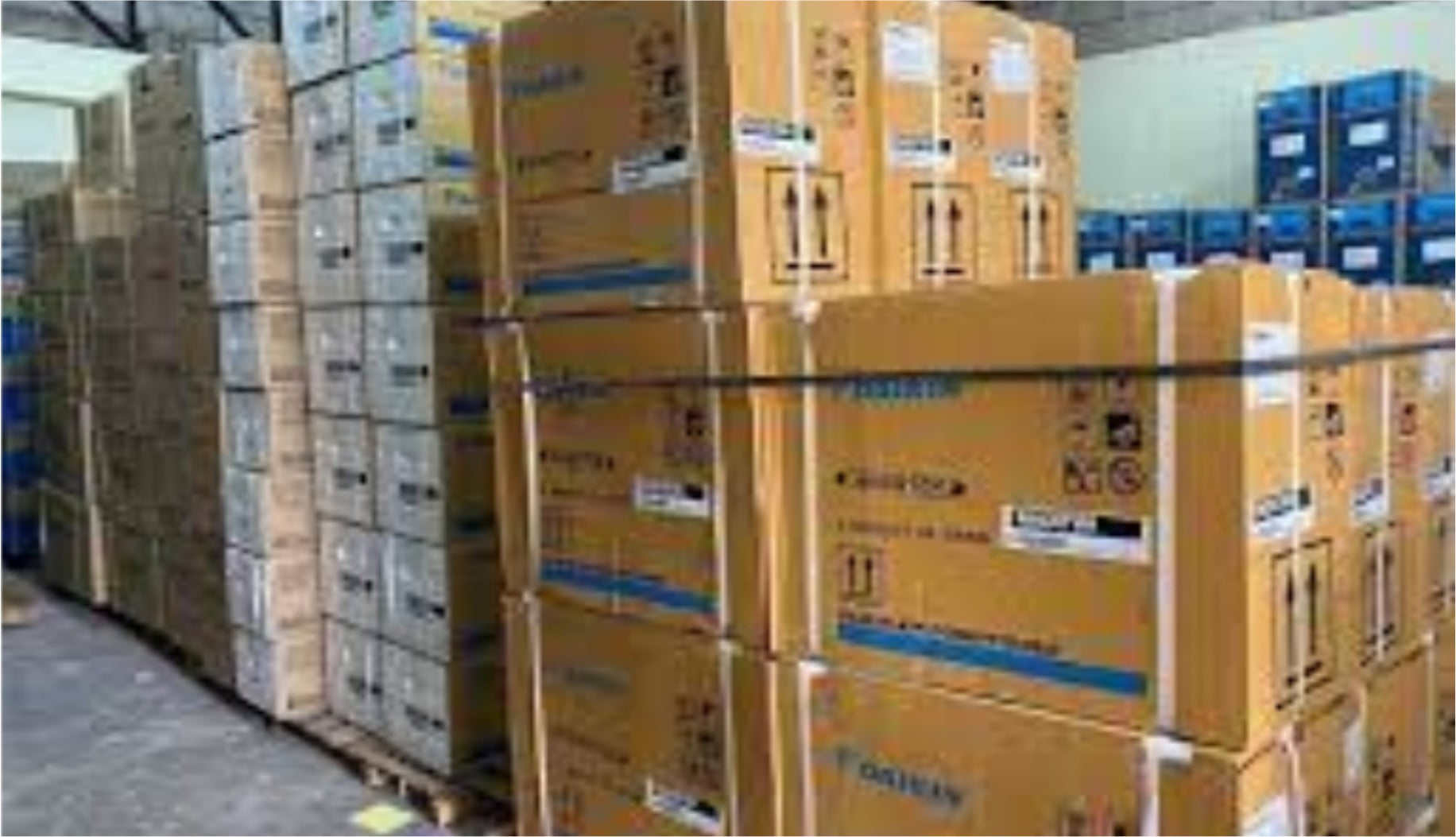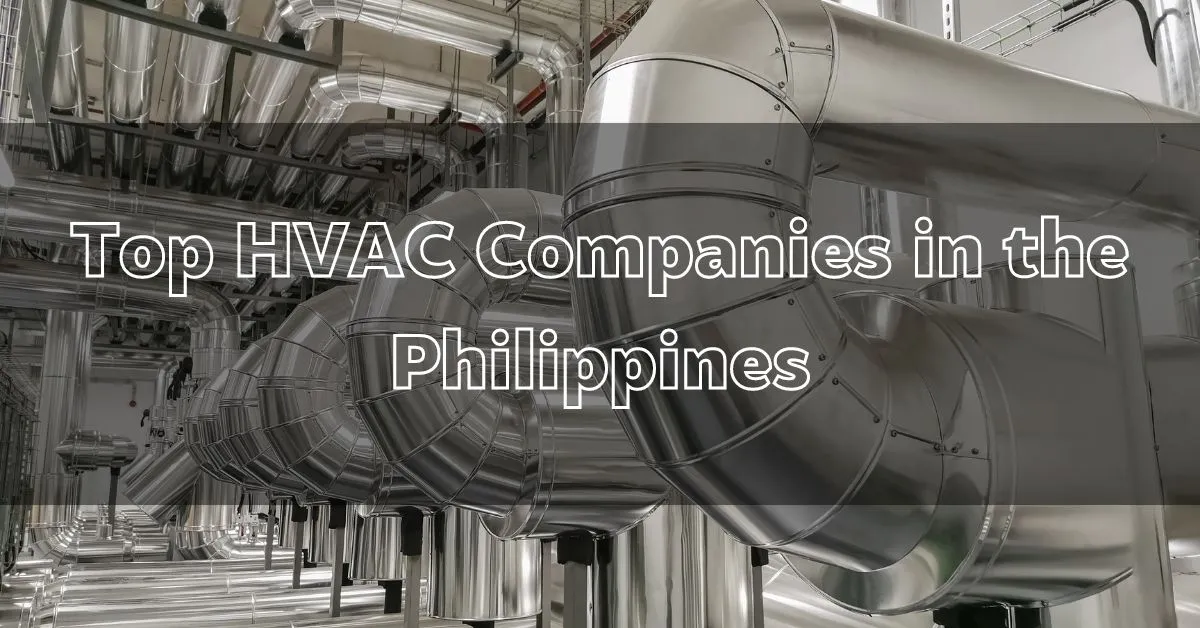An air conditioning system, also sometimes referred to as an air conditioning and ventilation system, is a technology used to regulate the temperature, humidity, and air quality in indoor spaces, creating a comfortable environment. It effectively cools your living environment by eliminating moisture and heat from the air. These systems operate by moving a refrigerant through a closed loop, absorbing heat from within your home, and transferring it outside.
There are two main types of air conditioning systems for homes: centralized air conditioning systems (also called central air conditioning) and individual room units. Central AC systems cool your entire home using a network of ducts, while individual units cool specific rooms. In addition to temperature control, some air conditioning systems also double as ventilation systems, improving indoor air quality by circulating and filtering air.

Parts of the Air Conditioning System
There are many parts to an air conditioning system, but there are four major parts, which we will discuss here.
Click Each to See Details
- Evaporator
- Compressor
- Condenser
- Expansion Valve
The evaporator is a critical component of an air-conditioning system that absorbs heat from the interior environment. It acts like a sponge for heat, constantly drawing warmth out of the air that circulates through the system. A special chemical known as refrigerant transforms from a liquid to a gas inside the evaporator coils. This process of transformation is key: as the refrigerant absorbs heat, it evaporates, and in doing so, it pulls heat away from the surrounding air. The refrigerant then blows the now-chilled air back into the home, providing a refreshing feeling on a hot day.
This procedure is required for the refrigerant to release the absorbed heat into the condenser. The condenser, usually located outside the building, dissipates the heat that the indoor air absorbs. It achieves this by allowing the refrigerant to change from a high-pressure gas to a high-pressure liquid, which releases the heat into the surrounding air. The heat exchange process's efficiency is critical for the air conditioning system's overall cooling performance.
The compressor is often considered the heart of the air conditioning system. Its function is to put pressure on the refrigerant and circulate it between the evaporator and the condenser. The compressor receives low-pressure refrigerant gas from the evaporator and compresses it to produce high-pressure, high-temperature gas. This increase in pressure and temperature is crucial for the refrigerant to release the absorbed heat when it reaches the condenser. The efficient functioning of the compressor directly impacts the system's ability to cool the air effectively.
This pressurization process is vital for the refrigerant to effectively shed heat in the condenser unit. The condenser coil is located outside your house and is designed to dissipate heat into the surrounding air. The high pressure created by the compressor ensures that the refrigerant in the condenser coil is hotter than the outside air, allowing for efficient heat transfer.
In an air conditioning and ventilation system, the condenser is critical to the heat exchange process. The condenser fan significantly enhances the efficiency of the condenser by pushing air over the coils. This airflow assists in eliminating the heat from the indoor environment, consequently reducing the refrigerant's temperature. The fan accelerates the heat dissipation process by circulating air across the condenser coils, ensuring equal cooling of the refrigerant before it returns to the indoor unit. The fan's performance is therefore critical to the system's overall efficiency.
In centralized air conditioning systems, maintaining high efficiency in the condenser is crucial for sustaining maximum cooling performance. Any decrease in condenser efficiency can lead to higher energy consumption and reduced cooling capacity. Regular maintenance, such as cleaning the coils and ensuring the fan operates correctly, can help maintain optimal efficiency. Properly functioning condensers not only improve cooling effectiveness, but they also extend the lifespan of the air conditioning system, providing both comfort and cost savings over time.
The expansion valve is an important component that controls the flow of refrigerant into the evaporator. It functions as a precise measuring device, lowering the pressure of high-pressure liquid refrigerant from the condenser before it enters the evaporator. This pressure reduction is crucial as it facilitates the refrigerant's phase change from liquid to vapor, enabling it to absorb heat more efficiently. The expansion valve ensures that the evaporator operates effectively by regulating the refrigerant flow, thereby optimizing the overall cooling process.
The expansion valve's power to control refrigerant flow helps to maintain the ideal temperature and comfort levels within the cooled room. By ensuring that the correct amount of refrigerant reaches the evaporator, the valve supports the system in achieving optimal heat exchange. This precise control also reduces the risk of compressor overload and extends the lifespan of the air conditioning unit. Consequently, the expansion valve plays a pivotal role in delivering reliable and efficient cooling, contributing to overall indoor comfort.
1. Evaporator
The evaporator is a critical component of an air-conditioning system that absorbs heat from the interior environment. It acts like a sponge for heat, constantly drawing warmth out of the air that circulates through the system. A special chemical known as refrigerant transforms from a liquid to a gas inside the evaporator coils. This process of transformation is key: as the refrigerant absorbs heat, it evaporates, and in doing so, it pulls heat away from the surrounding air. The refrigerant then blows the now-chilled air back into the home, providing a refreshing feeling on a hot day.
This procedure is required for the refrigerant to release the absorbed heat into the condenser. The condenser, usually located outside the building, dissipates the heat that the indoor air absorbs. It achieves this by allowing the refrigerant to change from a high-pressure gas to a high-pressure liquid, which releases the heat into the surrounding air. The heat exchange process’s efficiency is critical for the air conditioning system’s overall cooling performance.
2. Compressor
The compressor is often considered the heart of the air conditioning system. Its function is to put pressure on the refrigerant and circulate it between the evaporator and the condenser. The compressor receives low-pressure refrigerant gas from the evaporator and compresses it to produce high-pressure, high-temperature gas. This increase in pressure and temperature is crucial for the refrigerant to release the absorbed heat when it reaches the condenser. The efficient functioning of the compressor directly impacts the system’s ability to cool the air effectively.
This pressurization process is vital for the refrigerant to effectively shed heat in the condenser unit. The condenser coil is located outside your house and is designed to dissipate heat into the surrounding air. The high pressure created by the compressor ensures that the refrigerant in the condenser coil is hotter than the outside air, allowing for efficient heat transfer.
3. Condenser
In an air conditioning and ventilation system, the condenser is critical to the heat exchange process. The condenser fan significantly enhances the efficiency of the condenser by pushing air over the coils. This airflow assists in eliminating the heat from the indoor environment, consequently reducing the refrigerant’s temperature. The fan accelerates the heat dissipation process by circulating air across the condenser coils, ensuring equal cooling of the refrigerant before it returns to the indoor unit. The fan’s performance is therefore critical to the system’s overall efficiency.
In centralized air conditioning systems, maintaining high efficiency in the condenser is crucial for sustaining maximum cooling performance. Any decrease in condenser efficiency can lead to higher energy consumption and reduced cooling capacity. Regular maintenance, such as cleaning the coils and ensuring the fan operates correctly, can help maintain optimal efficiency. Properly functioning condensers not only improve cooling effectiveness, but they also extend the lifespan of the air conditioning system, providing both comfort and cost savings over time.
4. Expansion Valve
The expansion valve is an important component that controls the flow of refrigerant into the evaporator. It functions as a precise measuring device, lowering the pressure of high-pressure liquid refrigerant from the condenser before it enters the evaporator. This pressure reduction is crucial as it facilitates the refrigerant’s phase change from liquid to vapor, enabling it to absorb heat more efficiently. The expansion valve ensures that the evaporator operates effectively by regulating the refrigerant flow, thereby optimizing the overall cooling process.
The expansion valve’s power to control refrigerant flow helps to maintain the ideal temperature and comfort levels within the cooled room. By ensuring that the correct amount of refrigerant reaches the evaporator, the valve supports the system in achieving optimal heat exchange. This precise control also reduces the risk of compressor overload and extends the lifespan of the air conditioning unit. Consequently, the expansion valve plays a pivotal role in delivering reliable and efficient cooling, contributing to overall indoor comfort.
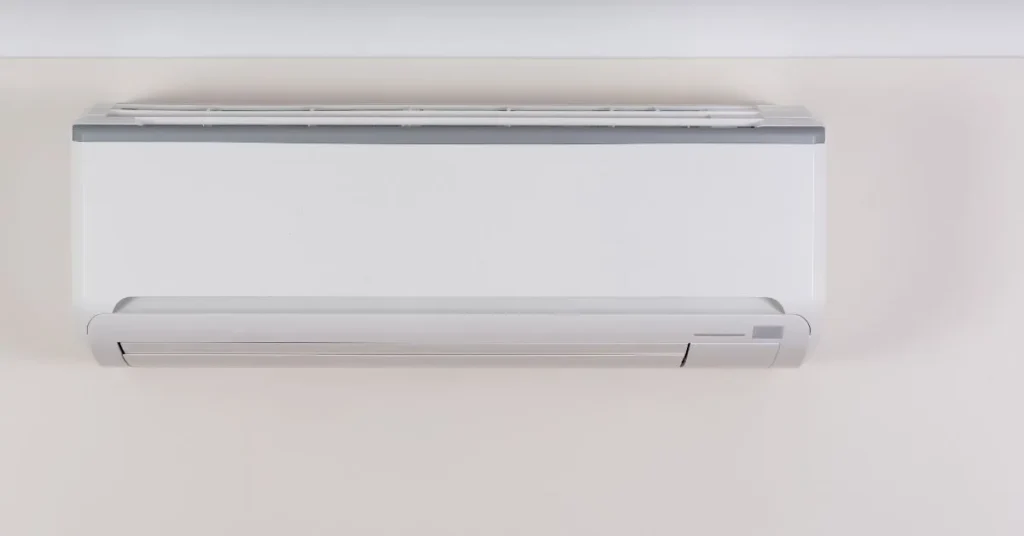
What is the Primary Function of an Air Conditioning System?
The main purpose of an air conditioning system is to manage interior temperatures by removing heat and humidity from the air, resulting in a more relaxing atmosphere. This is critical for both home and commercial environments, particularly in centralized air conditioning systems that service expansive areas effectively.

Who Developed the First Modern Air Conditioning System?
Willis Carrier developed the first modern air-conditioning system in 1902. His idea transformed temperature control, establishing the foundation for modern air conditioning and ventilation systems. Carrier’s innovation serves as the foundation for today’s central air conditioning systems, which provide comfort to homes and businesses all over the world.
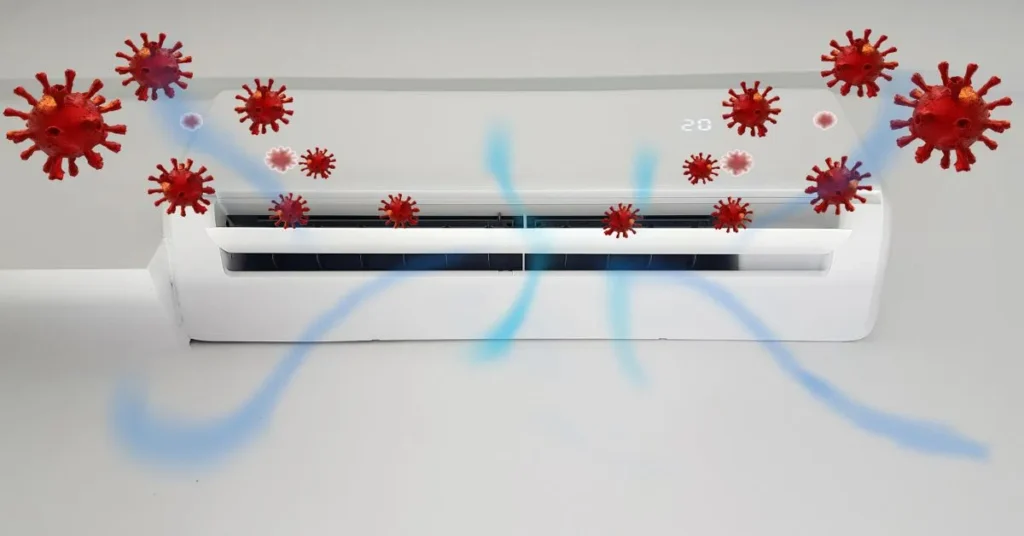
How Does an Air Conditioning System Work?
An air conditioning system circulates refrigerant through four primary parts: the evaporator, compressor, condenser, and expansion valve. The refrigerant absorbs heat from the inside air and then expels it outdoors. Central air conditioning systems use this procedure to effectively relax and dehumidify large spaces.

What are the Different Types of Air Conditioning Systems?
Specific cooling needs and preferences shape the design of individual air conditioning systems. Understanding the possibilities, from simple window units to complicated geothermal systems, will help you choose the right system for your home or workplace. The following is a list of common air conditioning systems.
- Window Air Conditioner
- Central Air Conditioner
- Ductless Mini-Split
- Portable Air Conditioner
- Floor Mounted Air Conditioner
- Smart Air Conditioner
- Geothermal Air Conditioning System
- Hybrid/ Dual Fuel Air Conditioner
- Cassette Air Conditioner
Air Conditioning Types
Window Air Conditioner
Window air conditioners are ideal for cooling single rooms. Self-contained units put in windows or walls are straightforward to install and economical. In locations where a centralized air conditioning system is unattainable, they provide effective cooling without pipes.
Central Air Conditioner
Central air conditioners are the most common for houses and large buildings. Cool air circulates by ducts in these systems. With an exterior compressor and internal evaporator, a central air conditioning system cools the building efficiently and equally.
Ductless Mini-Split
Ductless mini-split systems are a versatile solution for houses that do not have ducting. These systems consist of an outside compressor unit and one or more inside air-handling systems, connected by a pipe. These systems allow for separate settings of temperatures in different areas, making them a flexible and energy-efficient choice for a range of environments.
Portable Air Conditioner
Room-to-room delivery of efficient cooling solutions is possible with portable air conditioners. These devices often require venting through a window or wall to remove the heated air. You can use them for short-term cooling demands or in areas where typical air conditioning systems are unattainable.
Floor Mounted Air Conditioner
Ground-level installation distinguishes floor-mounted air conditioners from mini-split systems. These units are ideal for rooms with low walls or those who prefer not to have wall-mounted units. They provide effective cooling and are easily accessible for maintenance and adjustments.
Smart Air Conditioner
Smart air conditioners connect to home automation systems to let consumers modify cooling settings through smartphones or voice commands. These units incorporate energy-saving features and adjust temperature based on occupancy and usage.
Geothermal Air Conditioning System
Geothermal air conditioners cool efficiently using the earth’s constant temperatures. These systems circulate refrigerant through underground pipes to deliver heat inside and outdoors. Geothermal systems are sustainable for long-term cooling since they are energy-efficient and ecologically beneficial.
Hybrid / Dual Fuel Air Conditioner
Hybrid or dual-fuel air conditioners utilize electricity and natural gas for flexibility. To maximize energy efficiency and savings, these systems automatically switch energy sources based on external temperatures and utility rates. Hybrid air conditioners are ideal for homes and businesses, reducing energy use and improving comfort.
Cassette Air Conditioner
Cassette air conditioners are popular in commercial and large spaces because of their unnoticed ceiling-mounted design and substantial cooling capabilities. These systems use a modern and attractive small cassette unit fitted level with the ceiling to distribute conditioned air consistently throughout the area.
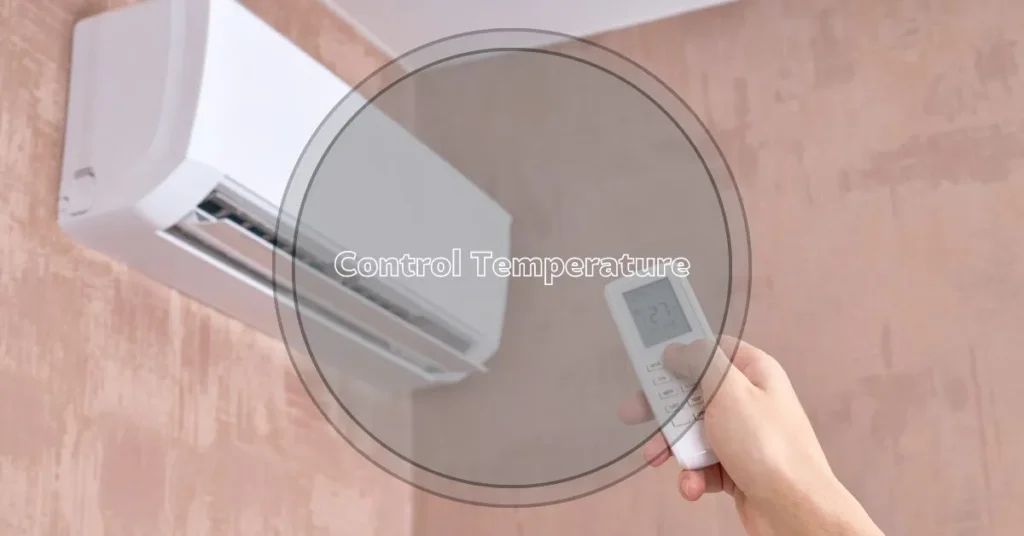
How to Control Temperature and Humidity in the Air Conditioning System?
A centralized air conditioning system carefully regulates the cooling process to control temperature and humidity. The system uses sensors to monitor interior conditions and change the functionality of components such as the compressor and evaporator as needed. The system provides a comfortable and stable interior atmosphere by adjusting the amount of cold air circulated and moisture levels. This optimization is critical for sustaining optimal conditions in any number of situations.

How to Determine the Size of the Heating and Air Conditioning System?
It is important to choose the right measurement of a heating and air conditioning system for your area. Square footage, insulation quality, and climate are all relevant considerations. A professional evaluation takes all of these factors into account when determining the appropriate capacity unit. Oversized systems waste energy, while undersized systems struggle to provide comfort. Proper size ensures that your air conditioning and ventilation systems operate efficiently and conveniently.
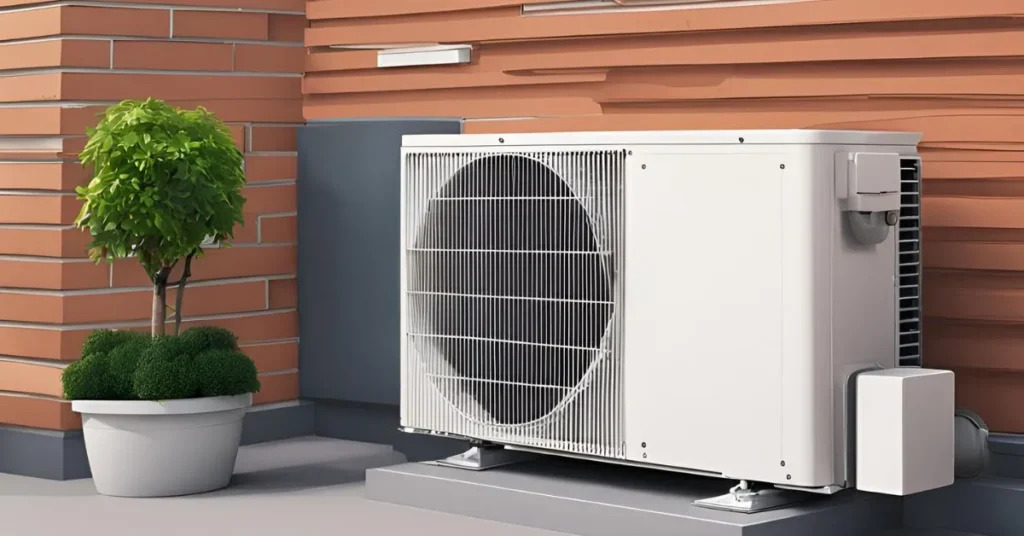
What is the Best Heating and Air Conditioning System?
Finding the best air conditioning or heating system is essential for year-round comfort. Centralized air conditioning systems perform well. Using ducts and air vents, a centralized air conditioning system effectively cools or warms huge spaces. Residences, workplaces, and commercial facilities can maintain regular temperatures using this system.
Stay Refreshed, Beat the Heat!
Centralized control and maintenance make centralized systems more convenient and energy efficient. They may also install air conditioning and ventilation to improve air quality and comfort. Long-term temperature management prefers central air conditioning systems due to their durability and efficiency. They’re a good investment for any property because they last for years with proper maintenance and installation.
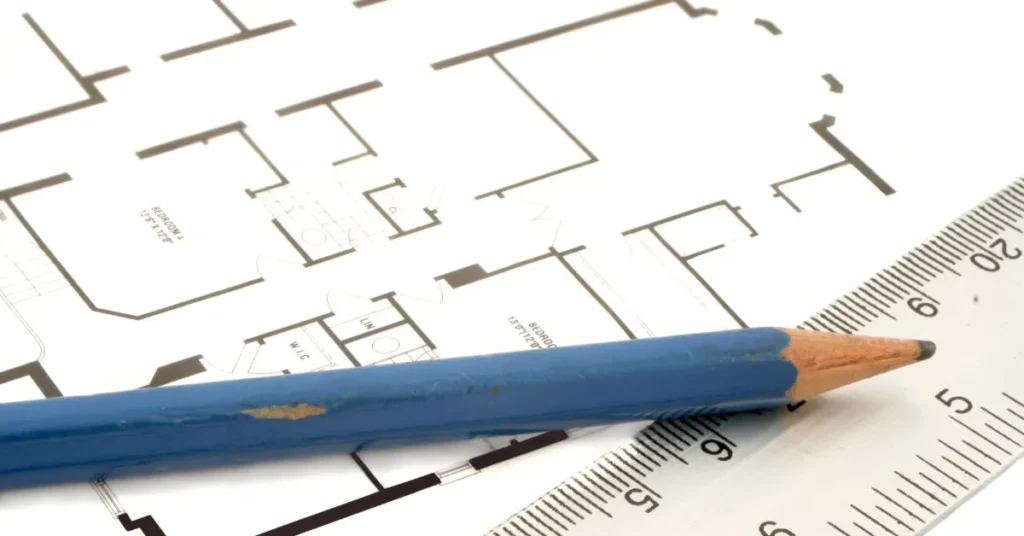
How to Size a Heating and Air Conditioning System?
Insulation levels, the number of windows, the room size and settings, and the local climate all play an important role in determining the right size of a heating and air conditioning system. A certified HVAC technician can use load calculations to determine the capacity required for optimal performance. Therefore, the particular standards of the building’s air conditioning and ventilation system are followed by the chosen system, and are used for heating or air conditioning.

How to Design an Air Conditioning System for a Room?
Designing an air conditioning system for a particular space requires careful consideration of factors such as room size, insulation, and airflow requirements. An isolated air conditioning unit can work in smaller rooms, however, a centralized air conditioning system may be beneficial in larger areas. Proper ventilation is critical to sustaining air quality and comfort. By assessing these factors, we can match an efficient and effective air conditioning and ventilation system to the room’s requirements.
FAQ
What Part of the Air Conditioning System is Usually Located Outside the Room?
In an air conditioning system, the outdoor unit, also known as the condenser unit or compressor unit, is typically located outside the room. It contains components such as the compressor, condenser coil, and fan to release heat from the indoor air into the outdoor environment.
In an Air Conditioning and Refrigeration System, What Occurs in an Evaporator?
The evaporator is where the magic of cooling happens! It absorbs heat from the warm indoor air. A refrigerant circulating through the evaporator coil cools down and changes from a liquid to a gas state as it absorbs heat.
What is the Function of Compressors in an Air Conditioning System?
The compressor is the central component of the air conditioning system. After it has absorbed heat in the evaporator, it stimulates the refrigerant. This compression raises the refrigerant's temperature, allowing it to discharge heat outside.
How much to Replace a Heating and Air Conditioning System?
The cost of replacing an HVAC system varies depending on a variety of factors, including size, brand, efficiency rating, and labor costs in your area. It can generally range from 150,000 PHP to 500,000 PHP or more.
What is the Function of an Evaporator in an Air Conditioning System?
In an air conditioning system, the evaporator is responsible for absorbing heat from indoor air, cooling it down, and circulating the cooled air back into the room. It facilitates the transfer of heat between the refrigerant and the indoor air.
How Does an Air Conditioning System Regulate the Temperature of a Room?
An air conditioning system regulates a room's temperature by removing heat from indoor air through the evaporator and releasing it outside via the condenser. The cycle of absorbing heat indoors and releasing it outdoors persists until the system achieves the desired room temperature.
What Component of an Air Conditioning System Avoids Heat Loss?
Insulation is a critical component of an air conditioning system that helps prevent heat loss. Proper insulation in walls, ceilings, and ductwork minimizes heat transfer between the conditioned indoor space and the external environment, improving energy efficiency and maintaining comfort levels.
What is the Best Air Conditioning System for a Home?
The best air conditioning system for a home is determined by factors such as the size of the house, climate, energy efficiency goals, budget, and personal preferences. Options include central air conditioning systems, ductless mini-split systems, heat pumps, and window units. Consulting with HVAC professionals can help determine the most suitable system for specific needs.




